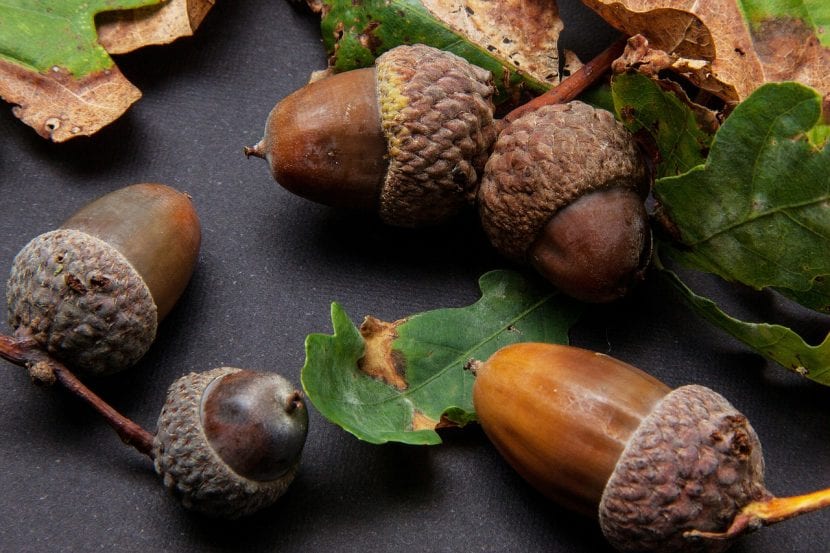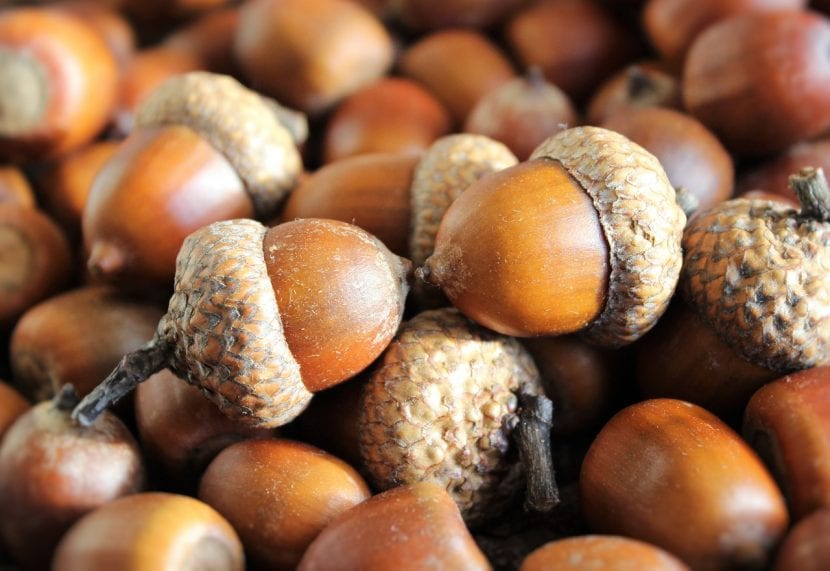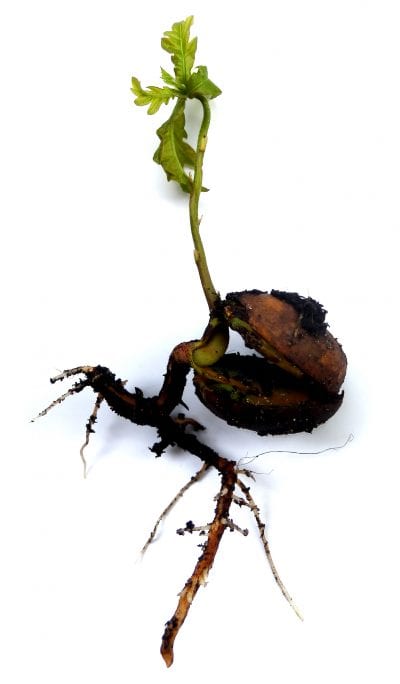
Oak is one of the most imposing deciduous trees in the forests of the Northern Hemisphere. It grows at a very slow rate, only about 10cm per year, but it is very resistant. If each plant had its own motto, our protagonist's would probably be "slow, but sure."
Because of its beauty, its rusticity, and its ability to live for more than 500 years, many want, each year, to plant the fruits of the oak tree to plant it later in the garden. If you are one of them, below we will explain how they are and how they are sown.
How are the fruits of the oak?

Oak is a tree that, with its 35 meters high and its 6-7m crown, is an ideal plant to provide shade. If we add to this that they produce edible fruits, what better way than to plant them and get an incredible garden, right? Acorns, which is how they are known, have a very characteristic shape when they finish maturing, which they do in autumn.
They are ovate-oblong, with a kind of cap formed by almost flat scales, slate. They are about 3 to 5cm long, and are brown in color. At one end they have a brown stem, the peduncle, through which the mother plant passed them the nutrients they needed for their development.
How are they planted?

The fruits of the oak must be collected as soon as they mature, since that is when they have to be sown so that they can germinate as soon as spring returns. Being a plant accustomed to cold, the most convenient is plant the acorns in a pot outside with universal growing medium or mulch and let nature take its course. But, what happens if we live in an area where winters are very mild and frosts hardly occur?
In this case, it will be necessary to stratify them in the refrigerator for 3 months at a temperature of 6ºC. Artificial stratification is a method that aims to imitate the conditions that the seed would encounter if it were in its habitat. It is done as follows:
- First, you have to take a tupperware that is made of transparent plastic and has a lid.
- Then, it is proceeded to fill with vermiculite up to half.
- Then the acorns are placed and covered with more vermiculite.
- Copper or sulfur is then sprinkled on the surface to prevent fungus growth.
- Finally, it is watered, avoiding waterlogging, and the tupperware is placed in the refrigerator (in the section where the milk, sausages, etc. are put).
Once a week, it is highly recommended to open the tupperware. In this way, the air will be renewed and, incidentally, the probability that fungi can appear will be further reduced.
After three months, in spring, we can plant the acorns in pots, in semi-shade. They sure won't take more than a couple of weeks to germinate 😉.
Good planting.
Hello, I would like to know what is the best time of the year and if there is a specific time to plant an oak tree.
I have three spaces to do it. Two in the valley of the cauca Vijes (Average temperature 19 ° C to 30 ° C, with 1.755 meters above sea level) and Pichinde (Average temperature 15 ° C to 25 ° C, with 2.750 meters above sea level) and another in Cauca (Popayán Average temperature: 13 ° C to 22 ° C, is at an altitude of 1.738 meters above sea level, masl) Colombia
Thanks Harold
goodgobiernocauca@gmail.com
Hi Harold.
Oak (Quercus) cannot live in tropical climates. You need the temperature to drop below 0º in winter.
On the other hand, it is sown in autumn, precisely so that it is cold and germinates in spring.
A greeting.
Can they be eaten? How do I prepare them so that I can consume them?